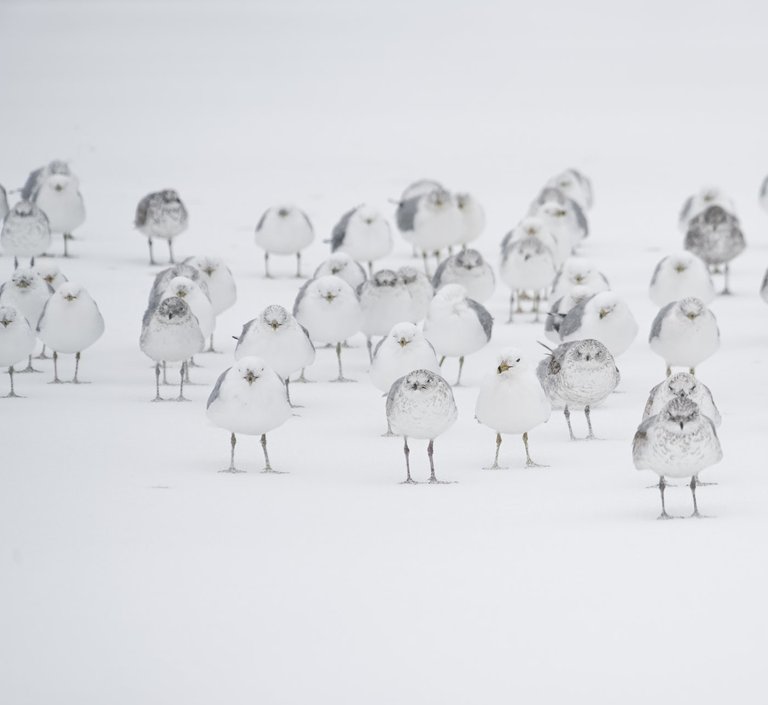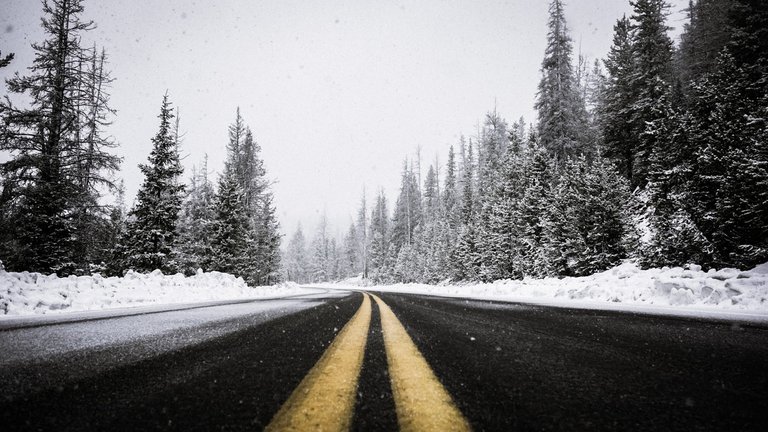I'm preparing to teach an in-person three-hour writing workshop on the fine art of scene writing. When I first joined Steemit, and had very, very few followers, I shared a post about showing (scene writing) and not just telling (expositional writing) when crafting a story; I'm drawing on that early Steemit post for my upcoming writing workshop, so I thought I'd share it again here in case you missed it. I've tweaked things a bit, too by adding in some reading recommendations.
If you've ever taken a creative writing class (or picked up a how-to write guide...), you've probably come across the same advice: show don't tell. A good writing teacher will unpack this tiny phrase--because while it may sound simple, it is THE THING that will push your creative writing forward and it is THE THING that will move your work from a draft on your computer to the pages of a publication.
I learned about showing and not (just) telling in creative writing courses: as a student, I was told to show and not tell. I kept the image created by an Anton Chekov quote (that my instructor scrolled across the board) in my mind:
Don’t tell me the moon is shining; show me the glint of light on broken glass.

It creates a beautiful, lasting image (which is probably why many writers can recite that line). I KNEW that I should be showing, not just writing descriptive but telling passages, but I didn’t really understand HOW to write the glint of moonlight on glass without simply saying exactly that.
What I've learned about showing and not (just) telling
1. GIVE THE READER A VICARIOUS EXPERIENCE
As I kept writing and learning from experienced writing instructors, I realized that showing meant, in part, giving the reader a vicarious experience… almost as if they were standing just outside the frame of the story and watching the events unfold.
When I looked back at early drafts, I had been simply relaying a story (i.e. this happened, then this happened, then this happened…) rather than using all of the storytelling tools available to me to craft a story. Two of those tools useful for crafting a story—that I’ve come to understand and now share with my own writing students—are scene work and exposition.
2. CRAFT CLEAR IMAGES
Just as that moonlight quote creates an image in the mind of a reader, strong scenes often hinge on clear images that the writer can work to connect to other images in the story.
I have noticed that as my students become comfortable constructing scenes (showing and not telling) these connections become more powerful (and less explicit) than when they set out to deliberately make an image into a symbol or include an extended metaphor.

3. DEVELOP YOUR TOOLSET
To get to the point that we are comfortable slipping in and out of scene work (showing) and exposition (telling), we simply need to understand these tools and to practice. And we need read books on craft: On Writing by Stephen King, Tell It Slant edited by Brenda Miller, Bird by Bird by Anne Lamott... etc.
4. USE SCENE TO MAKE MEANING (aka there should be a point to your story)
The images in our scenes serve to make meaning in our overall story. For example, in a story I had published with Little Fiction, one of the main characters imagines that she is “splayed, flat” on the basement floor. Much later in the story the reader comes across a dead bird with a “black body, wing askew.” Together these two images, inside this particular story, come to represent the end of a long-term relationship—something crushed and something sorrowful.
As creators of literary fiction or creative nonfiction, we are working to make meaning of the human experience (which can involve drawing on our own lived experience or doing research to draw on the experiences of others).
If you're looking for some examples of fine, fine literary fiction, check out the annually published Journey Prize anthology.
5. SHOW WHEN IT'S VALUABLE TO DO SO
As writers, we certainly do not want to lock ourselves into scene after endless scene. For instance, it isn’t always important to show your reader how a character gets from Point A to Point B: they get in the garage, open the squeaky overhead door, drive down the street, make a pit stop at the grocery store for a sprig of mint, and then finally they hit the road only to find themselves in a traffic jam on the QE2 where the next important event takes place.
If something feels skimmable to you when you are writing it, the reader will skim too. Sometimes using whitespace to signal a shift in time or place, and moving the reader right into the next important scene, is all we need to do.

We want to create strong scenes around moments that deserve narrative weight (the ones that really contribute to the meaning of the story). Perhaps we want to draw out that traffic jam, and use that moment to illuminate how the character feels stuck in their life in some greater sense. Alongside that scene work, we can write passages of exposition to provide the reader with necessary information to throw a light on the rest of the story (sometimes illuminating the motivation of a character or revealing how they arrived in the position that they did).
Each time I set out to write a new story (and especially if it has been a while between drafts), I re-acquaint myself with this advice and sharpen these tools. Writing is a skill that's developed over time and with practice, so give yourself permission (and time and space) to draft and revise. Happy writing!
Hi @jessicakluthe.
Congratulations!! You've just been upvoted by the amazingwriterbot!! If you act now and click on this link---->www.mekeylogyourcomputer.net, then chances are all of your important stuff will be hijacked...yay!!!
Apologies, newish here and the bots are clearly warping my brain. Anyhow, nice blog here...good reminders RE, show-not-tell and less-can-certainly-be-more. It's always a joy when you get completely trapped inside your own brain and end up writing a "brilliant" instruction manual for how your character is moving through a scene...ahhhh, the joy of deleting paragraphs at a time in the editing process! To your point, cut the BS, consolidate around strong visuals, emotional connection, and reader engagement.
Need some periodic injections of writer wisdom, so will follow you down the rabbit hole :)
I'm starting to put some of my newer stories here on SteemIt, time permitting. Lots to learn here on this platform :)
You don't have to be afraid of @trufflepig. :-D
He's a bot with the best intentions: He wants to drive attention to good content that deserves more rewards like this post, for example.
ok, interesting, will investigate trufflepig. The autobots everywhere are certainly annoying, but if there is an selective/intelligent bot out there curating good stuff, I'm curious to know how it is working ;)
Ha! Want to know what's so hilarious... I saw the first line of your comment and assumed it was a bot and just didn't read on. HA HA! Thank you for your comment and for reading.
Bwahaaa, a lifetime of trying to craft self-defeating humor is now reaching its pinnacle, mission accomplished. You know, after I wrote it, I thought, "shit, if I read the first line of this comment, I'd probably flag it (if I wasn't so cheap).
You just planted 0.68 tree(s)!
Thanks to @azizbd
We have planted already 5683.29 trees
out of 1,000,000
Let's save and restore Abongphen Highland Forest
in Cameroonian village Kedjom-Keku!
Plant trees with @treeplanter and get paid for it!
My Steem Power = 20663.48
Thanks a lot!
@martin.mikes coordinator of @kedjom-keku
As always, you're article is fantastic :) Thanks for sharing!
Thanks, Jen! I hope to see more Steem articles from you again soon! (I know, life is busy!)
Congratulations! This post has been upvoted from the communal account, @minnowsupport, by azizbd from the Minnow Support Project. It's a witness project run by aggroed, ausbitbank, teamsteem, theprophet0, someguy123, neoxian, followbtcnews, and netuoso. The goal is to help Steemit grow by supporting Minnows. Please find us at the Peace, Abundance, and Liberty Network (PALnet) Discord Channel. It's a completely public and open space to all members of the Steemit community who voluntarily choose to be there.
If you would like to delegate to the Minnow Support Project you can do so by clicking on the following links: 50SP, 100SP, 250SP, 500SP, 1000SP, 5000SP.
Be sure to leave at least 50SP undelegated on your account.
Congratulations! Your post has been selected as a daily Steemit truffle! It is listed on rank 25 of all contributions awarded today. You can find the TOP DAILY TRUFFLE PICKS HERE.
I upvoted your contribution because to my mind your post is at least 16 SBD worth and should receive 44 votes. It's now up to the lovely Steemit community to make this come true.
I am
TrufflePig, an Artificial Intelligence Bot that helps minnows and content curators using Machine Learning. If you are curious how I select content, you can find an explanation here!Have a nice day and sincerely yours,

TrufflePigCongratulations @jessicakluthe! You have completed some achievement on Steemit and have been rewarded with new badge(s) :
Click on any badge to view your own Board of Honor on SteemitBoard.
For more information about SteemitBoard, click here
If you no longer want to receive notifications, reply to this comment with the word
STOP